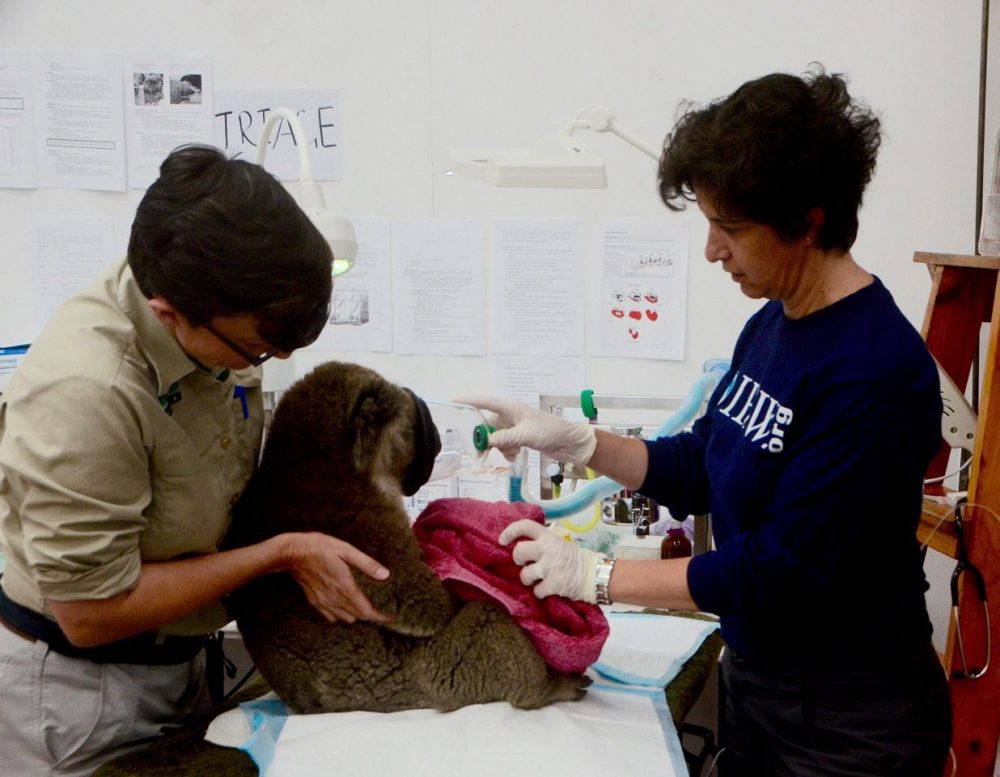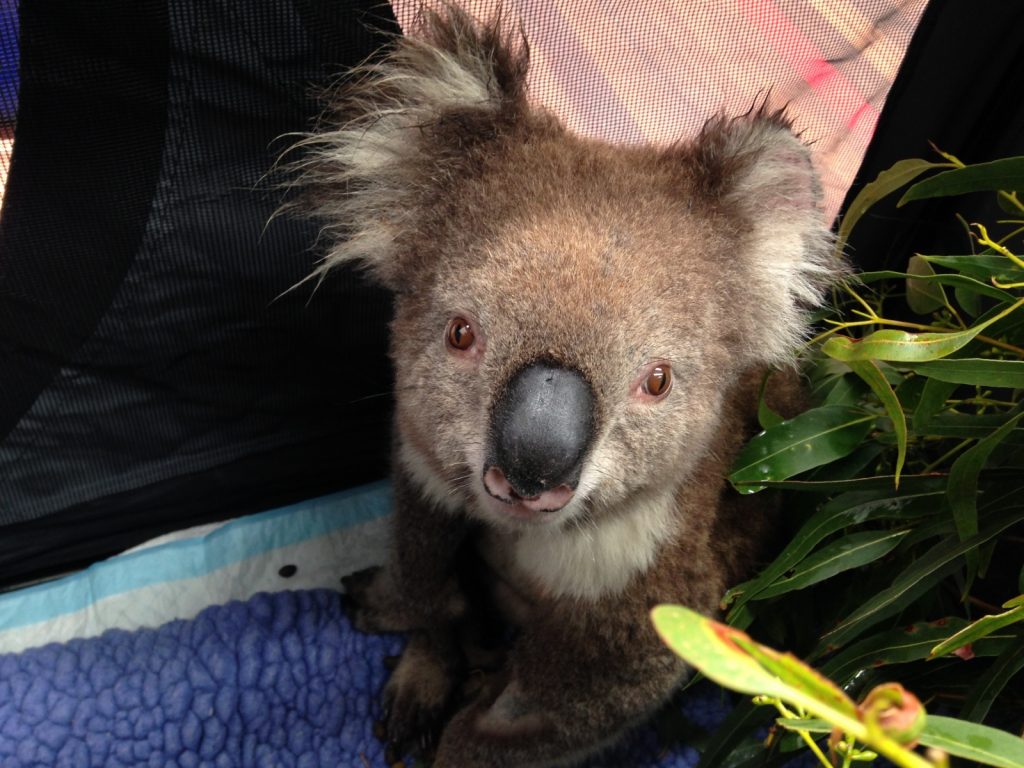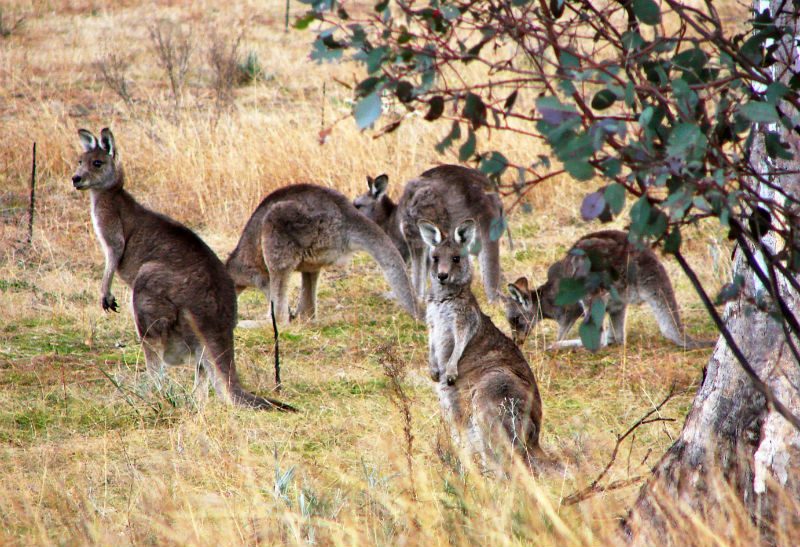Veterinarians care for koalas, kangaroos and more following devastating wildfires.
Close your eyes and think of Australia. What do you see? Kangaroos, koalas, crocodiles or The Great Barrier Reef?
Those are all amazing images, but you may not be aware of the annual bushfires. The hot, dry climate that allows all of its diverse wildlife to thrive also has a downside. Each year, there is a threat of intense fires that sweep through the countryside during the hottest months of the year.
This season fires have been so bad in some areas that the smoke was visible from space.The International Fund for Animal Welfare (IFAW assisted in Victoria where fires destroyed people’s homes as well as thousands of acres of eucalyptus forests. Koalas, kangaroos, wallabies, possums, echidnas and other wildlife in the area have suffered horrific burns and needed urgent care.
The Victorian Department of Environment, Land, Water and Planning (DELWP) created a triage center in Lorne and invited IFAW to help. My colleague Dr. Valeria Ruoppolo specializes in animal rehabilitation and was invited to join the team of wildlife veterinarians on the ground.
I recently talked with her about her experience and wanted to share our conversation with you:
What did you see when you arrived at the animal triage center?
The triage center had been set up and running for three days when I arrived, so there was a system in place and things were looking very organized!The DELWP and Country Fire Authority (CFA) collaborated and contributed to the rescue and collection of wildlife in the areas burnt by the fire.The center was set up at Lorne’s Leisure center as it had plenty of space to accommodate animals and also the facilities for larger numbers of people coming in to help.
The day before I arrived, the vets in charge (Dr. Jackie Reed and Dr. Jaclyn Gatt) had admitted ten koalas, and there were four at the triage center the next morning. The others had been either released back to the wild after clearing a health check, transferred for long term care to local ‘wildlife carers’ or euthanized due to the extent of their injuries.
How many animals were in need of care? What kinds of injuries did they have and how did you treat them?
Around 30 animals were admitted to the triage center in ten days. The species treated included mostly koalas, but two echidnas, a possum and a tiger snake were also admitted. As soon as the animals were admitted, they were immediately anesthetized for their evaluation of the presence of burns and signs of smoke inhalation.
If burnt and treatable, their injuries were soaked, cleaned, and burn creams and bandages were then applied; they also received pain-killers and antibiotics if required. Animals with low blood oxygen levels received supplementary oxygen due to probable smoke inhalation.
While in their crates/cages waiting for stabilization before final disposition (transfer or release), they would get plenty of eucalyptus leaves to choose from and chew in the meantime. Koalas are very selective and they have personal preferences when ‘talking’ about eucalyptus! Some would prefer new growth, others bigger leaves and so on.

We saw you treating one koala with an oxygen mask. Did he/she make it?
In the photo above we are actually anesthetizing the koala. On arrival, they were anesthetized immediately so we could perform a complete physical examination and evaluate their health status. Then we were able to calmly look for problems, clean their burns, put on bandages and give them the needed injections.
Do you feel like you and the team are making a difference in helping animals affected by wildfires?
Absolutely. It is a great feeling to be able to help animals that have been suffering in the field for several days, and that are dehydrated, hungry and in pain. Once captured, we would treat those that could have a second chance or end the suffering of those that could not be saved.
What else would you like to share about your experience?
What an amazing experience this was! During environmental emergencies we always meet incredible people, and this time was no different. I had the honor to work alongside some of the best professionals working with Australian wildlife and that was an outstanding learning experience for me. The staff vets (Dr. Kate Bodley and Dr. Sarah Frith) and vet nurse (Fyona Ryan) from the Melbourne Zoo, vets with Lort Smith Animal Hospital (Dr. Jackie Reed and Dr. Jaclyn Gatt) and vet nurse (Nicola Rae) have a remarkably detailed knowledge about koalas and wildlife injuries from bushfires in Australia, and they were enthusiastic to share their knowledge – an incredible resource for future bushfires.
What can people do to help?
Please donate funds and report all injured wildlife to your local wildlife care group to give them the best possible chance for survival. Remember, prompt responses maximize the animals’ chances!

